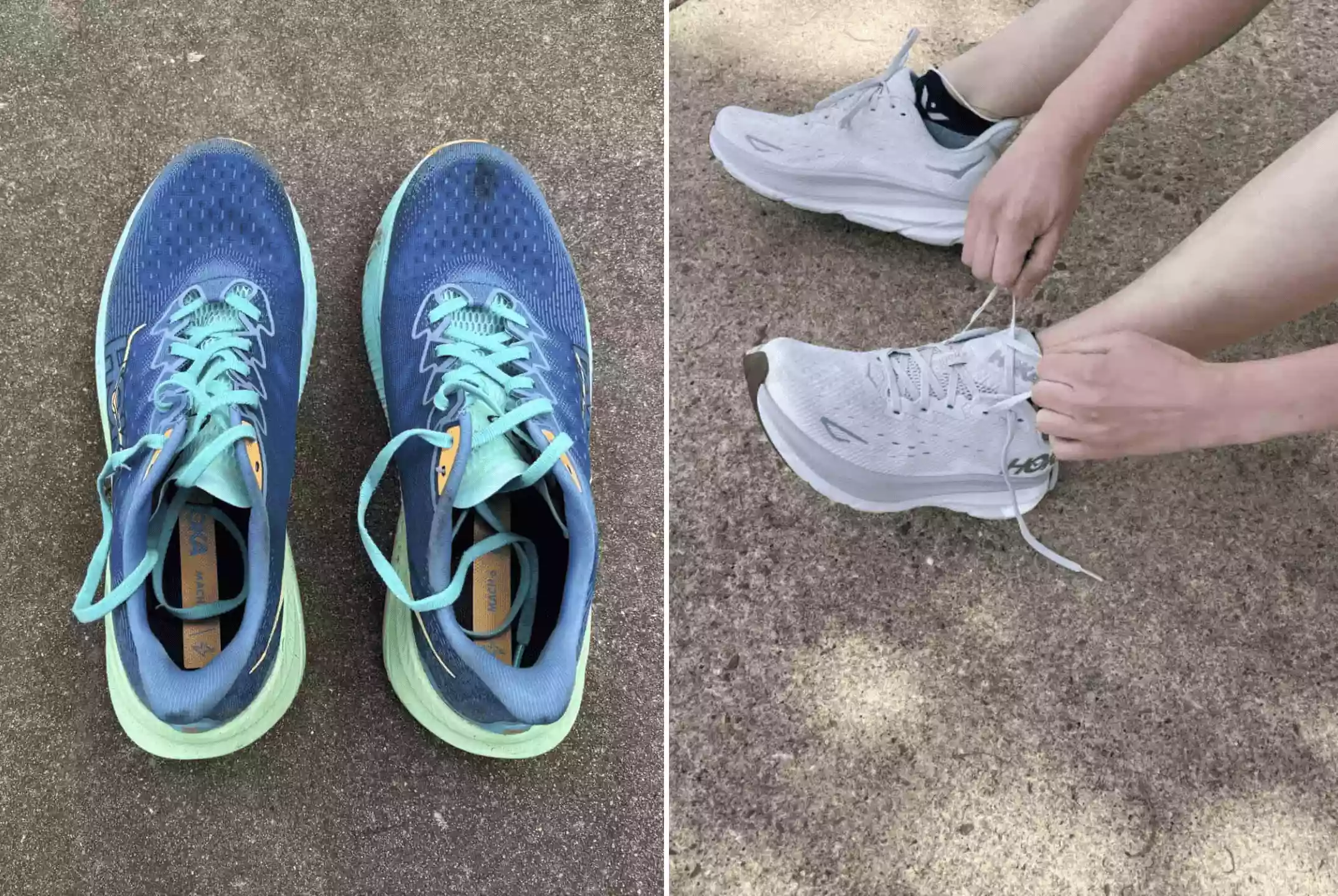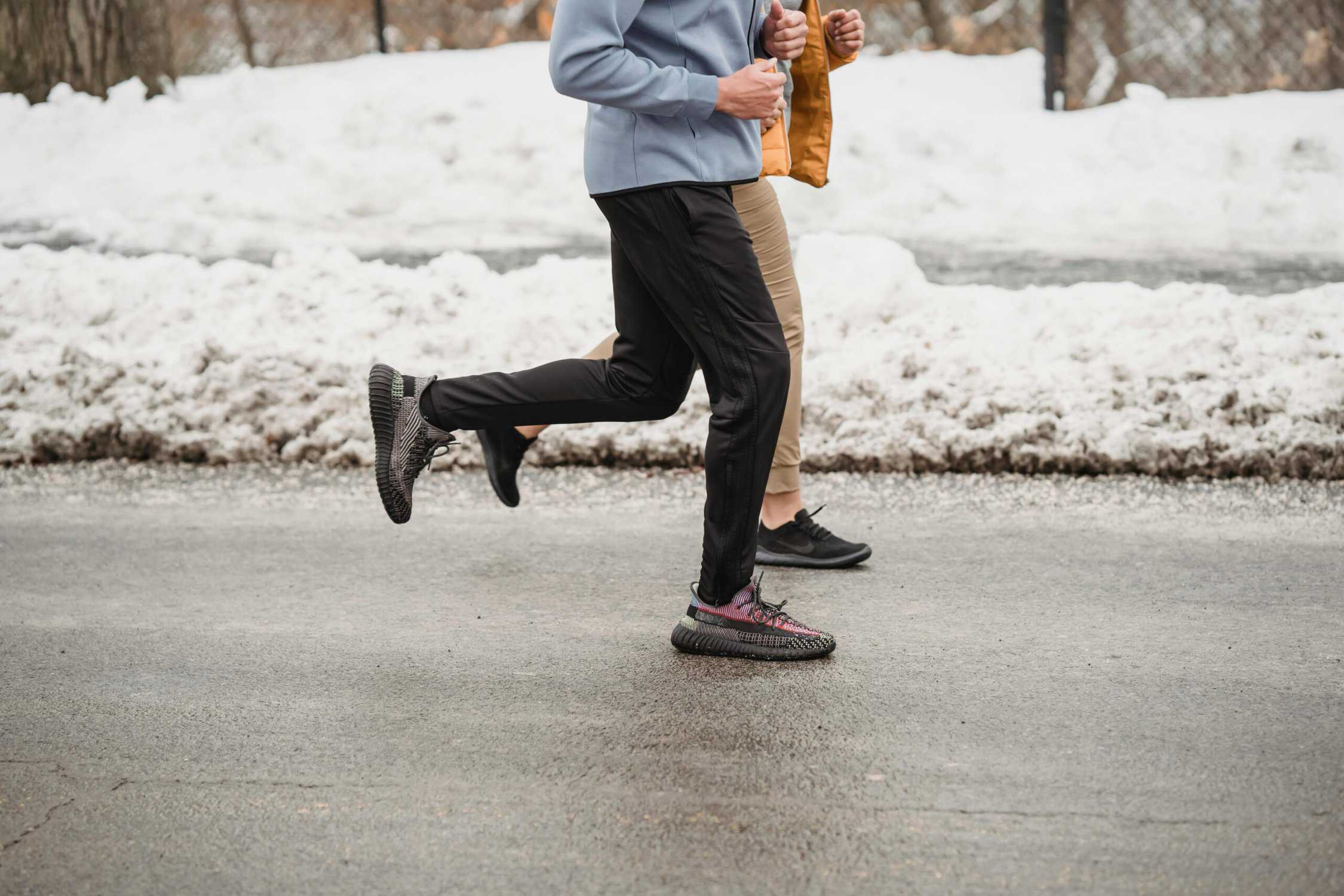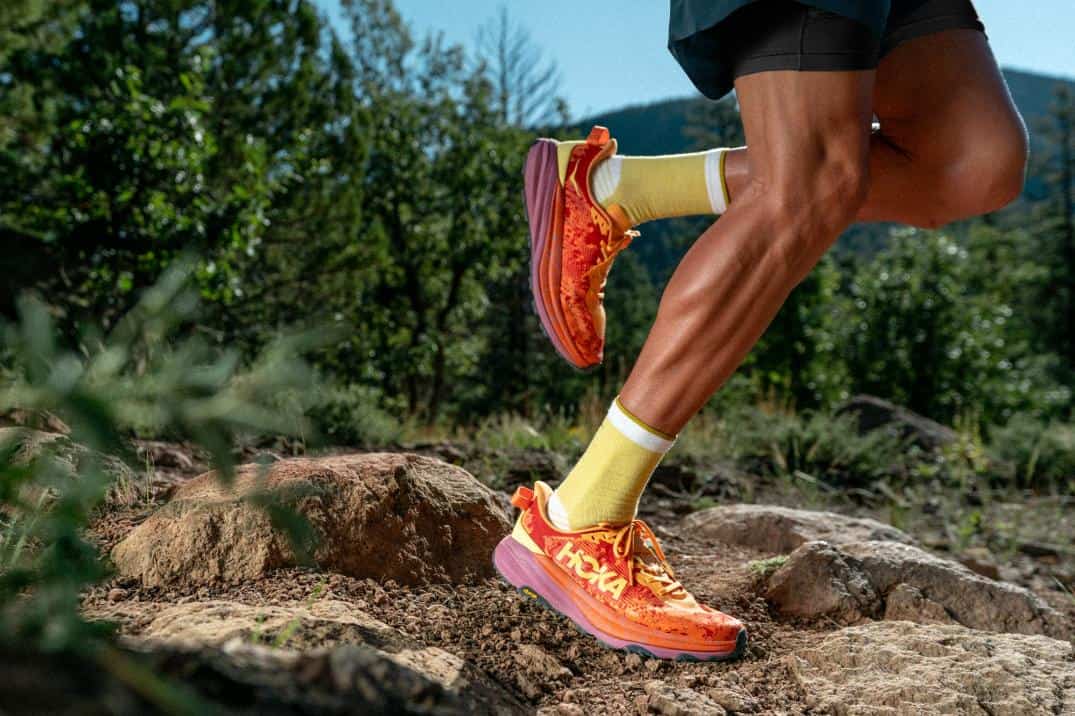If you’ve watched or participated in half-marathon or full marathon, chances are you’ve seen runners squeeze packs of mysterious goo-like substances into their mouths mid-race. Or, you may have seen them chomp down on, what looks like fruit chews. Or even more bizarre, crack open an “energy waffle” at the start line. There’s three components to any race distance nutrition strategy: pre-race (meals, carb loading, etc.), race day & mid-race (running gels, energy chews, hydration), and post-race (reducing inflammation, decrease running recovery time).
Having a nutrition strategy is critical for long runs and endurance running. But, many endurance athletes still ask the question – which running gels are the best for the type of running I’m doing?
In this article, I will outline the why you should be incorporating running gels into your training and racing, before giving you a more comprehensive look at the best running gels on the market in 2024.
Specifically, I’ll answer the following:
- Why do runners use running gels?
- What are the advantages of taking running gels?
- When should you be taking running gels?
- What do runners like about gels?
- And, I’ll share my picks on the best energy gels that my clients use for distance running.
What are energy gels?
Energy gels, or running gels, are convenient packets of carbs, amino acids, and other nutrients designed to resupply accessible glycogen and electrolytes that get depleted during long duration runs.
Most energy gels are similar. They contain a combination of simple sugars, like sucrose, fructose, glucose, and maltodextrin.
Simple sugars are the body’s preferred source of fuel during exercise because they can be used by the body quickly after consuming. Most gels provide between 20 and 30g of carbohydrates.
Many gels also contain electrolytes which are required on all long runs more than 60 minutes. Electrolytes, mainly sodium, potassium, and magnesium, are important minerals that regulate fluid balance, nerve function, and muscle contraction. The best electrolytes for runners play a crucial role in rehydration, the prevention of muscle cramps, and the sustaining of high energy levels.
During a run lasting more than 60 minutes, it’s recommended you’ll need to consume an additional 300-600mg of sodium per hour.
Some gels also include caffeine in them. While not required for elevated energy levels, caffeine or coffee before or during running has been linked to improved endurance running performance.
Our preferences for energy gels comes down to affordability, artificial versus natural ingredients, efficacy, and texture. Some runners find the difference in texture and ingredients may contribute to an upset stomach while running.
At the end of the day, energy gels, chewables, or tablets are a personal preference. Should you find a product that has a similar ingredient makeup and you prefer the flavor or texture, go with your gut. Literally.
Are gels good for running?
If you’re only running the odd 5-10k, you should not be thinking about any fueling strategies during the race. Anything underneath 60 minutes of activity, it’s unlikely you’ll run out of available energy to finish your race.
To avoid hitting “the wall,” which describes the feeling when you run out of available glycogen stores to fuel your activity, you need 30-60 grams of carbohydrates per hour of running regardless of what speed you’re running.
The sports nutrition industry has created products that are designed to be extremely digestible. But, you can find readily accessible energy for your endurance activity from products like energy gels, sports drinks, gummies, bananas, pretzels, or energy bars.
Experiment with different options during your training to find what works best for you.
A little dried fruit may be ok, but try to avoid too much because of their high fiber content. Energy gels contain very little fiber, making them a better option.
Keep in mind that any event longer than an hour requires electrolyte replenishment. Along with carbohydrates, replenishing electrolytes is essential to maintain proper muscle function and prevent cramping.
Ideally, when looking to run a marathon or half marathon, you should prioritize energy gels that provide sodium, potassium, magnesium, and other electrolytes.
When should you take running gels?
During a long run, you should consume 30-60g of carbohydrate per hour.
Most energy gels contain around 25-30g of carbs, aim to take 1 gel every 30 to 45 minutes.
For my marathons, I eat one energy waffle at the start, and then I take one gel every 30 minutes. I alternate between caffeinated gels uncaffeinated gels. In total, I end up taking a total of 6-7 gels over the 26.2 miles.
Elite ultramarathon runner Mike Wardian takes an energy gel every 4 miles during a marathon, which works out to be 6 gels over the course of a marathon.
What do runners like about gels?
Some runners (myself included) love gels for many reasons. The easy-to-digest carbs found in gels provides quick and reliable fuel. Gels are easy to scarf down and carry with you during a run. Plus, many gels also contain electrolytes which are key for preventing dehydration and avoiding cramps.
The texture of gels makes them easy to consume fast (no chewing necessary) and they are perfect for mid-run fueling.
What are isotonic energy gels?
Many energy gels are hypertonic and must be taken with water in order to be properly absorbed into your system.
Without water, the body will osmotically release water into the digestive tract to lower the concentration of sugars, and digestive issues may ensue (bloating & diarrhea).
Some brands carry isotonic energy gels (also called hydrogels) which means they can be taken without water. Hydrogels or isotonic energy gels are premixed with water.
As a general rule, however, take your running gels with water to avoid digestive problems. You should be drinking 750ml every hour anyways to avoid dehydration.
Athletes with sensitive stomachs should try different energy gels to figure out which ones work best.
The 12 Best Energy Gels for Runners
It can be hard to know where to start when searching for the perfect energy gel. We’ve scoured the internet, consulted best-seller lists, and asked our long-distance running coaches and clients what they use and why.
Here’s what we found to be the 12 best energy gels for runners:

Honey Stinger Organic Energy Gel
Specs:
- Price: $39.99 fo 24 packets ($1.66 per Gel)
- Flavors: Strawberry kiwi, fruit smoothie, acai pomegranate
- Energy sources: Honey, electrolytes, B-vitamins
- Calories: 90
- Carbs: 24g
- Electrolytes: 45mg sodium, 58mg potassium, 2mg calcium
- Caffeine: 32mg caffeine (acai pomegranate flavor)
PROS: Personally, these are my favorite gels for sports nutrition based on texture and taste.
The Honey Stinger Organic Gels use natural ingredients, like real honey, which studies have found make for fantastic energy source.
Plus, all of Honey Stinger’s flavors can be mixed with water to make a natural energy drink before or during your race.
CONS: They contain insufficient electrolytes to be the only source of fuel during a long run.

Maurten Gel 100
Specs:
- Price: $60.00 for 12 packets ($5.00 per Gel)
- Flavors: Neutral taste
- Energy sources: Water, Glucose, Fructose, Calcium carbonate, Gluconic acid, Sodium alginate
- Calories: 100
- Carbs: 25g
- Electrolytes: 20mg sodium, 6mg calcium,
- Caffeine: 0mg
PROS: Maurten Gel 100 is by far one of the most popular energy gels among runners. Maurten provides running pros like Eliud Kipchoge with his in-race fueling.
It is a hydrogel (isotonic) which means it doesn’t need water to be taken with it. It is designed to be easily digestible and easy on any stomach. Maurten has a neutral taste (great if you’re sick of funky flavors!) and has a runny jello texture.
CONS: This is the most expensive gel on the list and, other reviewers have called out that the texture and sweetness are both an acquired taste.

GU Energy Gel Variety Pack
Specs:
- Price: $39.40 for 24 packets ($1.64 per Gel)
- Flavors: Strawberry banana, chocolate outrage, vanilla bean, salted caramel, jet blackberry, tri-berry (Plus, many other regular and caffeinated options available online).
- Energy sources: Maltodextrin, fructose, BCAAs (branch chain amino acids)
- Calories: 100
- Carbs: 22g
- Electrolytes: 55mg sodium, 30mg potassium
- Caffeine: 20mg caffeine in select flavors
PROS: These are very popular, very affordable gels. They contain two sources of carbs, maltodextrin and fructose, which when combined provide for easier digestion.
The gels are supplemented with a small amount of branched-chain amino acids to help decrease muscle damage and mental fatigue. They are entirely vegan and gluten-free.
CONS: They contain insufficient electrolytes to be the only source of fuel during a long run.
During a run lasting more than 60 minutes, you should aim to get 300-600mg of sodium per hour. To obtain this, you’ll need to supplement with hydration mixes, chews, or salt tablets.
The Gu Energy Gel also contains a handful of preservatives like Sodium Benzoate and Potassium Sorbate. If you prefer to steer clear of preservatives, these might not be for you.

GU Roctane Energy Gel
Specs:
- Price: $62.40 for 24 packets ($2.60 per Gel)
- Flavors: Blueberry pomegranate (35mg caffeine), vanilla orange (35mg caffeine), cherry lime (35mg caffeine), strawberry kiwi, lemonade sea salt, chocolate (35mg caffeine), chocolate coconut (35mg caffeine), tutti frutti (35mg caffeine), cold brew coffee (70mg caffeine), salted lime
- Energy sources:Maltodextrin, fructose, BCAAs
- Calories: 100
- Carbs: 21g
- Electrolytes: 125mg sodium, 30mg calcium,
- Caffeine: Several caffeinated energy gels
PROS: Consider Roctane Energy Gels the step up of the original GU Energy Gels. They contain 3-times more sodium, and 3-times the BCAAs, and there is a higher variety of caffeinated flavours.
Overall, these are a superior for long-duration and high-intensity activities.
CONS: A more expensive version of the popular Gu Energy Gel.

Clif Shot Energy Gel
Specs:
- Price: $39.99 for 24 packets ($1.66 per Gu)
- Flavors: Razz and chocolate
- Energy sources: Organic maltodextrin and cane sugars
- Calories: 100
- Carbs: 24g
- Electrolytes: 60-90mg sodium
- Caffeine: 0mg
PROS: Clif is a reliable and trusted brand. This is one of the only sports gels on the market made with 85-90% organic ingredients.
CONS: They contain insufficient electrolytes to be the only source of fuel during a long run.
Unfortunately, CLIF has discontinued their Clif Shot Energy Gels as of May 1st, 2023. However, the razz and chocolate flavors are still available for purchase on the Clif website and Amazon.

Science In Sport GO Isotonic Energy Gels
Specs:
- Price: $33.00 for a 30 packets ($1.10 per Gel)
- Flavors: Orange, lemon and mint, salted strawberry, apple
- Energy sources: Maltodextrin
- Calories: 87
- Carbs: 22g
- Electrolytes: 100mg sodium
- Caffeine: No caffeinated option.
PROS: Because SIS gels are isotonic, they can be taken without water without causing stomach issues. SIS gels are dairy-free, gluten-free, and vegan and they aren’t overly sweet.
CONS: These European gels are a little harder to find and come by. They are not as popular in the United States and shipping costs at checkout can add up. They contain insufficient electrolytes to be the only source of fuel during a long run.

HUMA Energy Gel PLUS
Specs:
- Price: $2.75 per packet
- Flavors: Lemon lime, berries pomegranate, strawberry lemonade, blackberry banana.
- Energy sources: Natural fruit juices, coconut water, sea salt, chia seeds
- Calories: 100
- Carbs: 21g
- Electrolytes: 240mg sodium, 85mg potassium, 25mg calcium, 15mg magnesium
- Caffeine: No caffeinated option.
PROS: Huma Energy Gel PLUS is a fantastic product. It uses all natural ingredients (chia seed based), real food, real fruits, and it comes with electrolytes. Using Huma Energy Gel PLUS, you don’t need to worry about other electrolyte sources.
CONS: Another expensive option but, when you consider it provides enough carbohydrates and electrolytes, seems more reasonable. Other reviews cite the gel may become squishy and more liquid in heat.

Spring Energy Gels
Specs:
- Price: $72.00 for 20 packets ($3.60 per Gel)
- Flavors: Canaberry, long haul, power rush, hill aid, electroride, speednut, awesome sauce, chocolate heaven gel
- Energy sources: Fruits, rice, and coconut
- Calories: Around 140 (depending on the flavour)
- Carbs: Around 17g (depending on the flavour)
- Electrolytes: 60mg sodium
- Caffeine: Caffeinated and non-caffeinated options
PROS: Spring Energy Gels are unique and made of real food. If you’ve tried everything else and you just find that the other gels irritate your stomach, this product might be a good option for you. It’s made without the high concentration of sugar or maltodextrin overload.
CONS: Definitely one of the more expensive options on our list. Most reviewers also liken the texture to apple sauce – a mashed food product versus a gel product.

Boom Nutrition Carb Boom! Energy Gel
Specs:
- Price: $48.00 for 24 packets ($2.00 per Gel)
- Flavors: Apple Cinnamon, Banana Peach, Grape Pomegranate, Raspberry, Strawberry Kiwi, Vanilla Orange
- Energy sources: Maltodextrin, natural fruits
- Calories: 110
- Carbs: 26g
- Electrolytes: 50-60mg sodium, 50-60mg potassium
- Caffeine: Caffeinated and non-caffeinated options
PROS: Boom Nutrition Carb Boom! Energy Gels are known amongst runners for their delicious taste and texture. We like Boom because the gel has a nice, mess-free consistency. Like Spring Energy Gels, picking a product that uses only natural ingredients ensures there’s no upset stomachs on race day.
CONS: These contain insufficient electrolytes to be the only source of fuel during a long run.

Untapped Maple
Specs:
- Price: $36.95 for 20 packets ($1.84 per Gel)
- Flavors: Pure Vermont maple syrup, coffee, salted cocoa, salted raspberry, salted citrus
- Energy sources: Maple syrup
- Calories: 100
- Carbs: 26g
- Electrolytes: 5-60mg sodium, 80mg potassium
- Caffeine: Caffeinated and non-caffeinated options
PROS: In our opinion, these make for some of the most unique energy gels on the market. They are made from pure maple syrup, and are the perfect alternative to traditional, gooey, sticky, gels. The packaging is great too – it isn’t sharp on the lips and it slips perfectly into a running vest for quick access during races.
CONS: If you don’t like maple syrup, you won’t like these gels. And unfortunately, the most popular flavour (pure Vermont maple syrup) barely contains any sodium (5mg), while the other flavours have around 60mg. If you’re going to pick this running gel, you’ll have to supplement with salt tablets for runners.

PowerBar PowerGel Original
Specs:
- Price: $54.89 for 24 packets ($2.29 per Gel)
- Flavors: Green apple, salty peanut, strawberry banana, tropical fruit, vanilla
- Energy sources: Maltodextrin, fructose
- Calories: 100
- Carbs: 25g
- Electrolytes: 210mg sodium
- Caffeine: Caffeinated and non-caffeinated options
PROS: These contain two sources of carbs, maltodextrin and fructose, which when combined provide for easier digestion. Powergels are also packed with sodium and caffeine, making them great for long and tough races.
CONS: These gels are sticky should you accidently get some on your fingers. Try to open them with your teeth if you can. Our runners also agree that they are quite salty and need to be washed down with water.
Find on Amazon

Muir Energy Gel Variety Pack
Specs:
- Price: $97.00 for 24 packets ($4.00 per Gel)
- Flavors: Blueberry bergamot, cacao almond, cashew lemon, cashew vanilla mate, passionfruit pineapple banana, red raspberry, red raspberry mate, strawberry
- Energy sources: Natural fruits, coconut palm nectar, blackstrap molasses
- Calories: 100-150
- Carbs: 12-22g
- Electrolytes: 100mg sodium
- Caffeine: Caffeinated and non-caffeinated options
PROS: These gels each contain 4-6 real food ingredients in each flavor. They are less like gels, and more like snacks, on par with spreads like peanut butters or jams. They have a delicious taste, a consistency of whipped peanut butter, simple ingredients, a more balanced macro-profile.
CONS: Because these are higher in fats and fibers, and lower in simple carbs, these are not our go-to gels for the average runner. We would recommend them for ultra-runners. Muir energy gels are also quite expensive.

UCAN Edge Gels
Specs:
- Price: $37.95 for 12 packets ($3.16 per Gel)
- Flavors: Strawberry Banana, Pineapple, Orange Mango, and Unflavored
- Energy sources: LIVSTEADY, the company’s proprietary low-glycemic, plant-based complex carbohydrate
- Calories: 70-80
- Carbs: 20g
- Electrolytes: 50mg sodium
- Caffeine: No
PROS: Made with zero sugar and no caffeine, UCAN’s energy gels boast a formula that helps endurance athletes release steady energy for up to 75 minutes at a time. A key ingredient in UCAN’s energy gels is LIVSTEADY, the company’s proprietary low-glycemic, plant-based complex carbohydrate aimed to keep blood sugar levels stable while fueling athletes on-the-go.
CONS: Slightly more expensive than other options and less flavours to choose from. Each pack also contains less calories and carbs than other gels.

Torq Energy Gel
Specs:
- Price: $37.50 for 15 packets ($2.50 per Gel)
- Flavors: Caramel latte, orange and banana, rhubarb custard, raspberry ripple, banoffee, strawberry yogurt, naked flavorless, black cherry yogurt, apple crumble, lemon drizzle, summer shandy
- Energy sources: Maltodextrin and fructose
- Calories: 110
- Carbs: 30g
- Electrolytes: 50mg sodium, 10mg potassium, and some magnesium, calcium, and chloride
- Caffeine: Caffeinated and non-caffeinated options
PROS: While it’s the taste of these gels that puts them in a different league, the underlying numbers are also excellent. Each 45g gel contains 30g of carbohydrates in a 2:1 maltodextrin-to-fructose ratio, which allows you to absorb more carbs per hour, and there are also five electrolytes thrown into the mix to help replace what you lose in sweat.
CONS: The gels are easy to get down while running, though we’d recommend having water with them.





